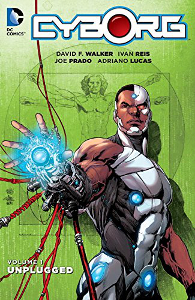 Series: The Steamborn Series, #1
Series: The Steamborn Series, #1
First Published: 29th November, 2015
Genre: Young Adult Steampunk / Novel
Available: Amazon.com | Amazon UK | Smashwords
Jacob is a boy living in a walled city, under constant attack from giant invertebrates. When an attack devastates part of the city, he and his friends investigate the cause.
I read this because of my love of invertebrates. It’s a steampunk world where invertebrates can grow to giant sizes. There are knights who ride giant spiders, insects pulling carriages, and the threat from wild invertebrates coming over the walls. I liked that though the wild ones were dangerous, it wasn’t that invertebrates were evil. Predators will kill people because they hunt, but there were invertebrates who were tame, who were farmed for food, and so on.
It’s one of the few books that treat spiders as just another animal. As well as the giant ones people ride, there are large (several inches across) jumping spiders that live around the city. Not everyone likes them, but they’re mostly treated as harmless.
Class themes are important. Jacob is from a poor family, who live in the Lowlands. As well as generally struggling with money for food and medicine, the walls protecting the Lowlands aren’t as good. That means they’re at risk from attacks. The rich area of the city is at the highest point, with the best walls.
It touches on some disability issues, as amputees are common due to the attacks. Jacob gets to work making prosthetics for people. This also links to the past, when the city was at war with people who had very advanced steampunk cybernetics. Some as prosthetics for people who’d lost limbs, but also some who’d been turned into cyborg soldiers. This would have had more impact if someone in the main cast had been injured, rather than being something that happened to minor characters. Though dehumanizing people with these prosthetics was treated as a serious issue, it was all rather distant.
The characters weren’t particularly diverse. They were mainly men/boys. Though it’s claimed the people in the present of the story are a mixture of all the races of the old world, everyone looks rather white until a few characters at the end. They fit a lot of stock character types. The eccentric old inventor. The reckless young boy who’ll save the world. Alice, the only girl who really had a major role, was there as the sensible one who told Jacob off for being too reckless.
The result is I was a lot more interested in the world than the characters living in it. The history and the society built around giant invertebrates was fun to explore. The characters who did the exploring were not the major draw for me.
The book is a little heavy on capitalised new names for things, which often made it harder to understand rather than clarifying what things were. It’s also the first in an ongoing story. There’s some resolution at the end, but it’s more of a pause before continuing the larger narrative.
[A copy of this book was received from the author for review purposes]
 First Published: 29th March, 2016
First Published: 29th March, 2016